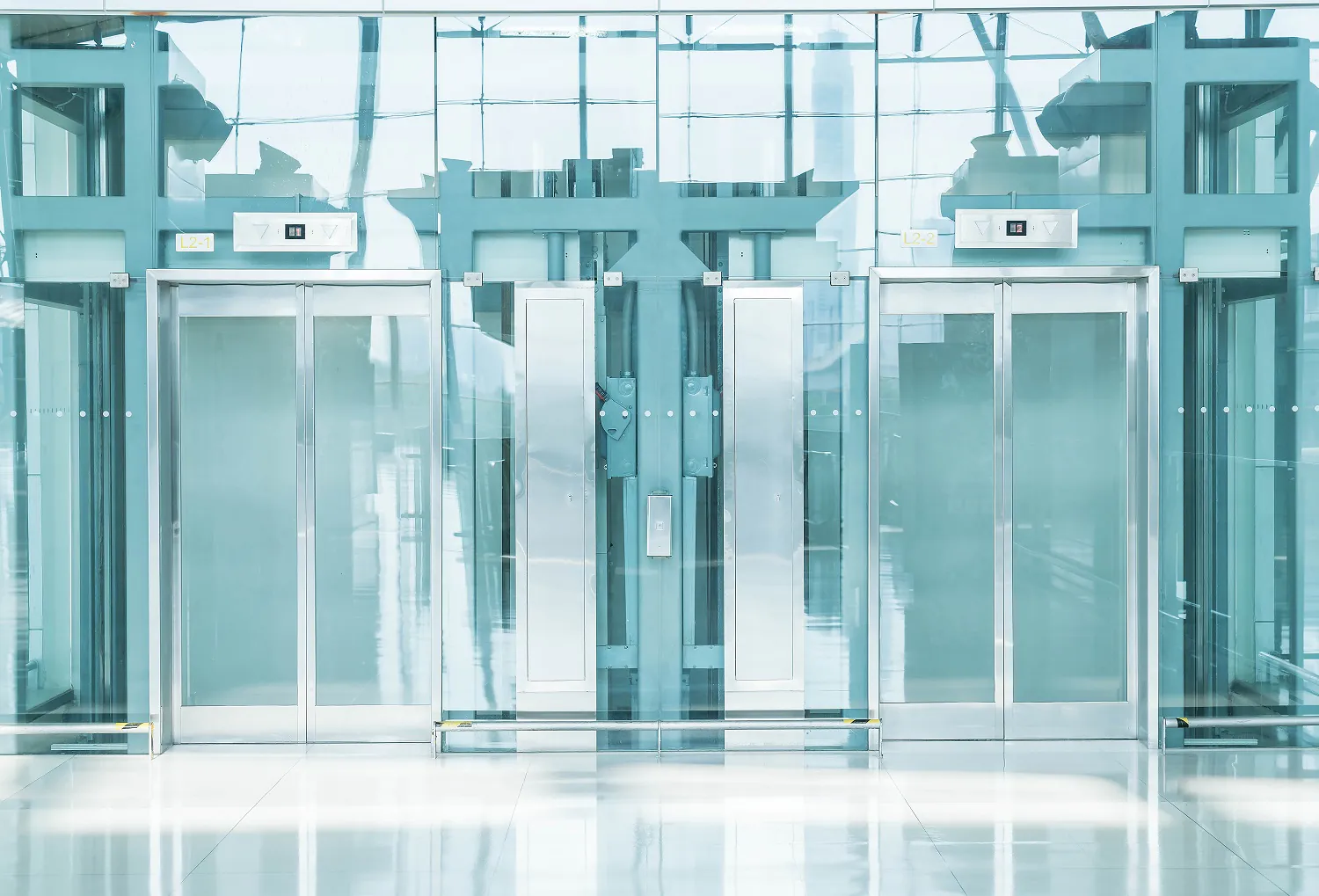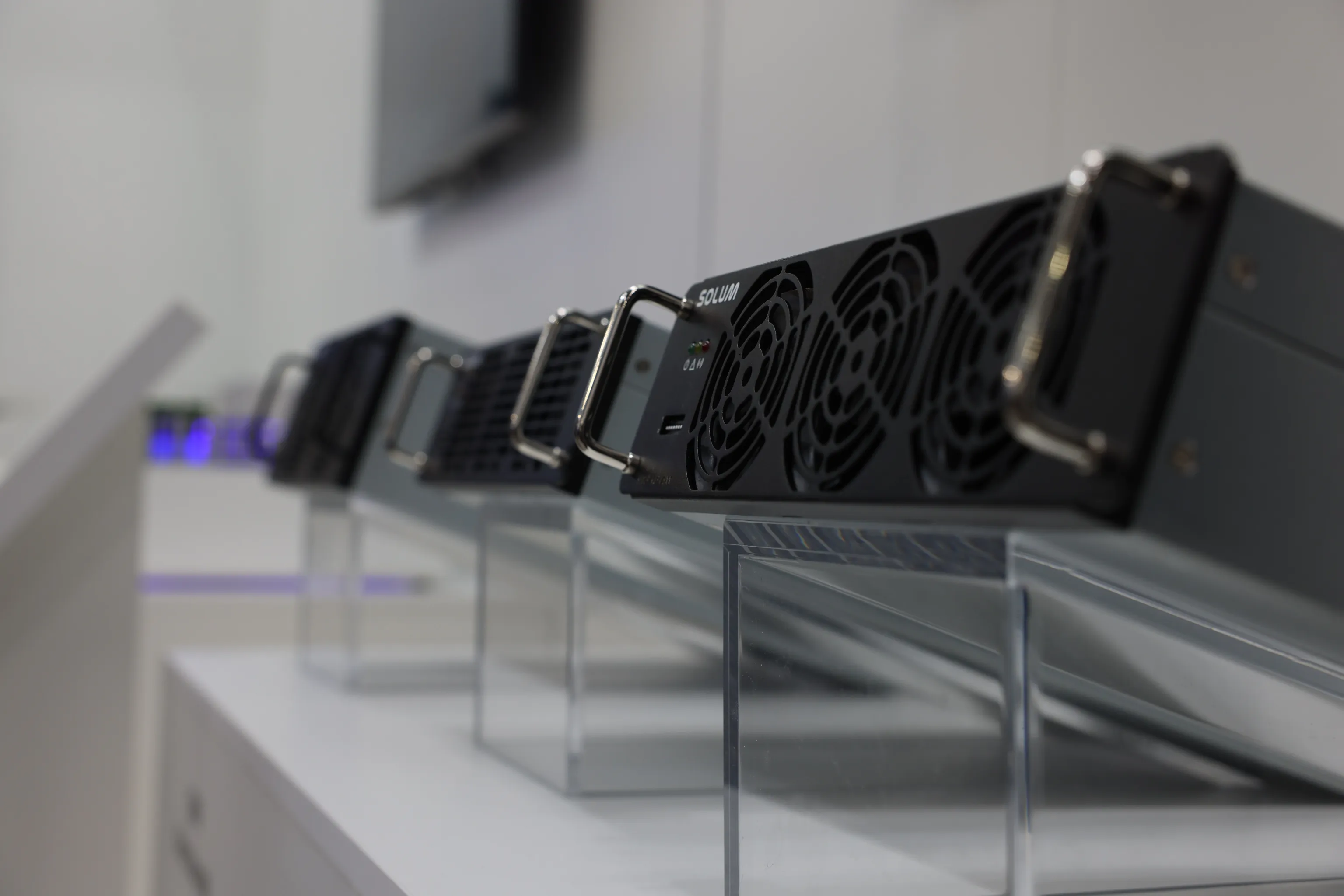Elevators are an integral part of buildings. According to the National Elevator Industry Inc, each elevator carries 20,000 people per year. Elevators can be found in malls, corporate buildings, residential highrises, government offices, and more. This type of vertical transportation has been the norm for most people, especially those who live in urban areas. And still, innovations and technologies are being added to this machine. This includes the implementation of smart elevators. From digital signage to predictive maintenance to advanced speeds, a smart elevator has all the technology needed for a modern world.
What is a smart elevator?
Miles ahead of a traditional elevator, a smart elevator is an elevator equipped with advanced technology to improve efficiency, safety, and the overall user experience. These elevators often utilize various technologies working together, including sensors, connectivity features, and automation, to optimize their operations.
Smart elevators are steadily gaining popularity as modernization continues to impact the world. The creation of modern buildings, or smart buildings has led to the need for advanced solutions, such as smart elevators. Smart elevators are known to be efficient, sustainable, and seamlessly adaptable to other management systems. Furthermore, they contribute to energy conservation and building sustainability.
According to a recent DaraHorizon Research, the smart elevator market is expected to reach USD 50.3 billion by 2032. This is due to smart city initiatives by governments and the need to solve urban living challenges. Now, the implementation of smart elevator projects can be anticipated in the coming years.
Smart elevators may feature IoT (Internet of Things) capabilities, artificial intelligence (AI), advanced control systems, predictive analytics, better security and access control, energy efficiency, and more.
Buildings with smart elevators
Many modern buildings around the world have started installing smart elevator systems in their establishments. These smart elevators can be found in some of the most famous and notable buildings in various cities, which shows their commitment to innovation, modernization, and sustainability. Here are a few notable examples:
- One World Trade Center, New York City, USA: The tallest building in the Western Hemisphere, One World Trade Center, features a state-of-the-art elevator system developed by ThyssenKrupp. This system includes high-speed elevators that can transport passengers to the top floors in just over a minute. They’re also equipped with intelligent software and kiosks that can optimize the elevator journey for passengers.
- Shanghai Tower, Shanghai, China: The Shanghai Tower, one of the tallest buildings globally, employs high-speed Mitsubishi Electric elevators. This system efficiently manages passenger traffic, reducing wait times, and optimizing energy usage.
- The Shard, London, UK: The Shard, an iconic skyscraper in London, utilizes KONE's self-climbing technology and double deck elevators, which allow for longer elevator travel distances and faster speeds while also reducing energy consumption.
- Burj Khalifa, Dubai, UAE: The Burj Khalifa, the tallest building in the world, relies on Otis' elevators equipped with destination dispatch technology. These elevators efficiently manage the vertical transportation needs of the building's occupants, which is crucial in such a tall structure. Because of this, Burj Khalifa has the world’s third-fastest elevator.
- Taipei 101, Taipei, Taiwan: Taipei 101, formerly the tallest building in the world, features Toshiba's double-deck shuttle elevators with a speed of 60.6 km/h, which can transport passengers from the fifth to the 89th floor in just 37 seconds.
- The Edge, Amsterdam, Netherlands: Known as the greenest office building in the world, The Edge incorporates smart building technologies, including advanced elevator systems. These elevators prioritize energy efficiency and the user experience.
Features of a smart elevator
Smart elevators incorporate a variety of features and technologies aimed at improving efficiency, safety, and the user experience for building occupants. Here are some of the key features that can be found or expected in smart elevator systems.
Destination Control Systems (DCS)
Destination control systems revolutionize elevator operation by allowing passengers to input their destination floor before entering the elevator. Smart elevators will typically have algorithms that will then analyze the destination requests and assign passengers to the most efficient elevator car. This reduces wait times and travel times for passengers. This system is particularly effective in buildings with high traffic demand.
Touchless Controls
In response to health concerns amid the global pandemic, smart elevators offer touchless control options to minimize physical contact with surfaces. In 2020, a study revealed that COVID-19 transmission occurred in an apartment elevator when a neighbor touched the same buttons that a quarantine traveler had.
Now, with touchless smart elevators, passengers can use voice commands or smartphone apps to select their desired floors. They will also be able to call elevators and operate other elevator functions without needing to touch physical buttons or keypads. This will help promote hygiene and reduce the risk of germ transmission.
Predictive Maintenance
Mechanical failure is responsible for about 15% of elevator accidents, which makes regular maintenance crucial. Sensors installed throughout a smart elevator system continuously monitor various components, such as motors, cables, doors, and brakes. Data collected from these sensors is analyzed using predictive analytics algorithms to detect patterns indicative of potential failures. By identifying issues before they escalate, maintenance can be scheduled proactively. This reduces downtime, as well as the risk of unexpected breakdowns and unnecessary accidents.
Energy Efficiency
Smart elevators usually employ various energy-saving technologies to reduce power consumption. Regenerative drives capture energy generated during braking and reuse it, reducing the overall energy demand of the elevator system. Standby modes or power-saving modes automatically activate during periods of low demand. Furthermore, efficient LED lighting is often used in elevator cars and shafts to minimize electricity usage.
Remote Monitoring and Control
Building managers and maintenance teams can remotely monitor elevator performance and receive real-time alerts for maintenance issues or malfunctions. This remote monitoring capability allows for proactive maintenance scheduling and rapid response to incidents. This ultimately improves elevator reliability and uptime. Additionally, some systems enable remote control of elevator operations, where operators can facilitate tasks such as resetting elevators or adjusting service levels from a centralized location.
Biometric Access Control
To enhance security, especially in confidential or private areas, some smart elevators integrate biometric authentication systems. This includes fingerprint scanners or facial recognition technology. Before accessing certain floors or areas, passengers must authenticate themselves using their unique biometric identifiers. This adds an extra layer of access control beyond traditional keycard or keypad systems.
Emergency Response Systems
Smart elevators are equipped with advanced emergency response features to ensure passenger safety during critical situations. These systems include emergency communication devices inside elevator cars, automatic recall mechanisms that return elevators to designated floors during emergencies, and integration with building-wide emergency protocols to coordinate responses effectively.
According to the National Elevator Industry Inc, there are approximately 27 elevator-related fatal accidents per year in the United States. Along with that, there are roughly 10,000 injuries related to elevators that occur each year. More advanced emergency response systems can help reduce the number of these incidents and keep passengers safe in case of crises.
Traffic Management Algorithms
Some smart elevators are also equipped with advanced algorithms that analyze passenger traffic patterns in real time to optimize elevator operations. By considering factors such as passenger destination requests, car capacities, and historical traffic data, these algorithms dynamically adjust elevator dispatching strategies. This will help minimize wait times, reduce congestion, and improve overall efficiency.
Double-Deck and Multi-Car Systems
In large buildings with high traffic demand, double-deck or multi-car elevator systems are employed to increase passenger capacity and throughput. These systems feature multiple elevator cars stacked vertically or arranged side by side within the same shaft. This allows for simultaneous transportation of passengers to different floors and reduces overall wait times or disorientation during peak hours.
Destination Entry Panels
Destination entry panels installed outside elevator banks enable passengers to input their desired destination floors before entering the elevator car. This streamlines the boarding process and optimizes elevator traffic flow by reducing the time spent inside the car for floor selection. Additionally, destination entry panels may display estimated wait times and direct passengers to the assigned elevator car for their destination.
Integration with Building Management Systems (BMS)
Smart elevators seamlessly integrate with other building systems as well. This includes fire alarms, security systems, and HVAC controls, through building management systems (BMS). This integration enables coordinated responses to emergencies, energy-efficient operation based on occupancy levels, and centralized monitoring and control of building-wide systems for improved efficiency and overall sustainability.
Digital Signage
Some smart elevators might also feature digital signage, whether it be for elevator entertainment, information dissemination, advertisement, and more. Not only will digital signage add a modern aesthetic to smart elevators, but it will also increase efficiency and safety for passengers every time they ride the elevator. An apartment resident in Seoul, South Korea, was able to install elevator town boards to improve their operations. These elevator digital signages were then used to display real-time weather and news announcements, as well as commercials and entertainment.
Advantages of installing a smart elevator
Nowadays, installing a smart elevator is not just for aesthetics in an establishment. Smart elevators offer numerous advantages for building owners, companies, managers, occupants, and visitors alike. They create a modern, engaging, and efficient mode of vertical transportation for everyone involved. Here are some of its advantages:
Improved Efficiency
Smart elevators optimize elevator operations through destination control systems, predictive maintenance, traffic management algorithms, advanced speeds, and more. This results in reduced wait times, shorter travel times, and increased elevator capacity. In other words, a smart elevator can improve overall efficiency and productivity in the building.
Enhanced Safety
Smart elevators are equipped with advanced safety features. Operators and passengers can expect emergency communication systems, automatic recall mechanisms, and real-time monitoring of critical components. These features enhance passenger safety and security. For huge establishments, residential buildings, and corporate buildings, this can provide peace of mind for all occupants and visitors.
Energy Savings
Energy-efficient technologies such as regenerative drives, standby modes, and LED lighting are a big part of smart elevator systems. They can help reduce the energy consumption of smart elevators and the actual buildings. By conserving energy, building owners can lower operating costs and contribute to environmental sustainability efforts.
Proactive Maintenance
Predictive maintenance capabilities allow building managers to identify and address potential issues before they escalate into dangerous and costly breakdowns. By scheduling maintenance proactively based on real-time data, smart elevators minimize downtime and extend the lifespan of elevator components. This reduces the maintenance costs for buildings and companies in the long run.
Enhanced User Experience
Features such as touchless controls and destination entry panels improve the user experience for elevator passengers. Reduced wait times, streamlined boarding processes, and intuitive interface designs contribute to a more pleasant and convenient vertical transportation experience.
Customization and Flexibility
Smart elevators can also be customized to meet the specific needs and preferences of building occupants and operators. From personalized destination preferences to adjustable service levels based on demand, these elevators offer flexibility and adaptability to accommodate changing requirements over time.
Space Optimization
Multi-car and double-deck elevator systems are also popular solutions nowadays. They optimize space utilization within the building—maximizing passenger capacity while minimizing the footprint required for elevator shafts and machinery. This is particularly beneficial in high-rise buildings, where space is limited and efficiency is paramount for occupants and visitors.
Seamless Building System Integration
Smart elevators seamlessly integrate with other building systems to ensure smooth operations every time. This includes fire alarms, access control, and building management systems (BMS). This integration enables coordinated responses to emergencies, centralized monitoring and control of building operations, and enhanced overall building efficiency.
Future Proofing
And of course, investing in smart elevator technology ensures that buildings and companies are ready for any future advancements. Buildings will not only remain competitive, but they will also remain up-to-date with evolving industry standards and technological advancements. Smart elevators are designed to be scalable and adaptable. As a result, they allow for easy integration of new features and functionalities as they become available.
Best digital signage for elevator
For buildings that want to begin modernizing vertical transportation in their establishments, finding the best digital signage is a good starting point. Digital signage for smart elevators can create an engaging atmosphere inside the actual area for passengers and occupants.
SOLUM Signage, for example, blends function and engagement. SOLUM Group developed these digital signage solutions for various businesses and retail environments. Residential highrises, apartment buildings, and corporate offices can rely on SOLUM Signage for several applications contributing to overall operational efficiency.
Here are some features that make SOLUM Signage the best digital signage for elevators:
- High-resolution Interactive Displays - SOLUM Signage has high-definition displays that are both interactive and immersive. This ensures that content appears crisp, vibrant, and engaging to viewers, even in the confined space of an elevator.
- Customizable Content and Media - Of course, SOLUM Signage can customize content. This allows the building managers to tailor messaging to specific audiences, events, or promotions. This includes dynamic content such as news feeds, weather updates, or social media integrations. This can also include different kinds of media, such as photos, videos, QR codes, texts, digital brochures, and more.
- Wayfinding and Navigation - Digital signage from SOLUM can also help provide wayfinding assistance. This can help passengers and visitors of the building navigate complex layouts. This includes maps, directories, and directional guidance to points of interest.
- Remote Control Management - Centralized control and management of content enable administrators to update and schedule content remotely. The intuitive content management system (CMS) platform of the SOLUM Signage offers building managers and operators a timely delivery of information without the need for on-site intervention.
The best digital signage solutions for elevators can transform the passenger experience and be an instrumental part of a building’s modernization.
Do you think you can benefit from digital signage for your building’s elevators? Contact SOLUM Group experts now and learn what functions can be utilized in a building environment.











